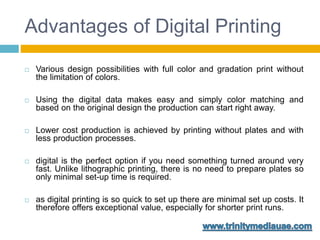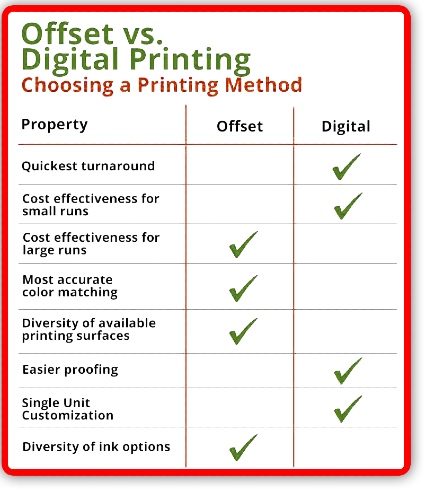The Definitive Guide to Digital Printing
Table of ContentsThe Best Guide To Digital PrintingHow Digital Printing can Save You Time, Stress, and Money.The smart Trick of Digital Printing That Nobody is Talking AboutA Biased View of Digital PrintingNot known Factual Statements About Digital Printing Rumored Buzz on Digital Printing
Variable data printing, such as direct mail with personalized codes and addresses, is ideally matched for electronic printing. Digital fast printing just requires four steps of layout, testimonial, printing and binding to get every little thing done. Digital fast printing has an unrivaled benefit: print on need.According to PMMI, digital printing allows brand names and producers to respond promptly to customer needs while boosting the supply chain, minimizing warehousing expense and waste, and delighting in faster time to market. That all audios terrific, yet exactly how does this technology do all that? The significant differentiator of these innovations is that there are no set-up charges and no plates with digital printing.
The Facts About Digital Printing Revealed
This results in quicker turn-around time and decreases cost when using digital printing.
Digital printing is highly versatile, so it's very easy to make changes to the package design rapidly. It all goes back to the plates.
With conventional printing methods, short-run printing is simply not feasible. Due to the fact that an excellent style can make or break your item, electronic printing consistently creates high-quality, clear and vivid graphics each time.
Digital printing is the process of printing digital-based images straight onto a range of media substrates. There is no demand for a printing plate, unlike with countered printing. Digital documents such as PDFs or desktop computer publishing documents can be sent out straight to the digital printing press to publish on paper, image paper, canvas, material, synthetics, cardstock and various other substrates.
Some Ideas on Digital Printing You Should Know
According to PMMI, digital printing enables brands and makers to respond swiftly to consumer demands while boosting the supply chain, minimizing warehousing price and waste, and appreciating faster time to market. That all sounds excellent, but exactly how does this modern technology do all that? The major differentiator of these innovations is that there are no set up costs and no plates with electronic printing.
According to Wikipedia, the best distinction between digital printing and conventional techniques such as lithography, flexography, gravure, or letterpress is that there is no demand to replace printing plates in digital printing, whereas in these analog printing techniques the plates are continuously changed. This results in quicker turnaround time and reduces expense over here when using digital printing.

How Digital Printing can Save You Time, Stress, and Money.
With traditional printing techniques, short-run printing is simply not feasible. Since an excellent style can make or break your product, digital printing consistently develops high-grade, clear and vibrant graphics each time.

According to PMMI, electronic printing permits brand names and makers to respond promptly to customer demands while enhancing the supply chain, minimizing warehousing expense and waste, and taking pleasure in faster time to market. That all audios wonderful, yet exactly how does this anonymous modern technology do all that? The significant differentiator of these modern technologies is that there are no set up charges and no plates with digital printing.
The Main Principles Of Digital Printing
This results in quicker turn-around time and lowers price when using electronic printing.
Digital printing is extremely adaptable, so it's very easy to make changes to the bundle design swiftly. It all goes back to the plates.

Everything about Digital Printing
Digital printing is the process of printing digital-based photos straight onto a selection of media substratums. There is no demand for a printing plate, unlike with countered printing. Digital documents such as PDFs or desktop computer posting data can be sent out directly to the digital printing press to print on paper, photo paper, canvas, textile, synthetics, cardstock and various other substratums.